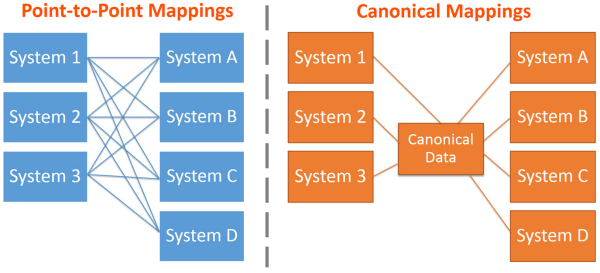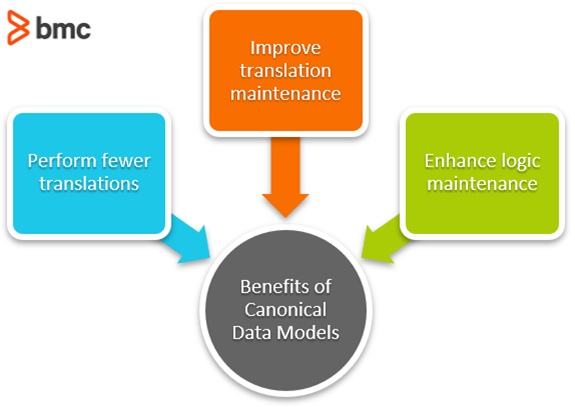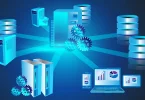The companies succeeding in the age of big data are often ones that have improved their data integration and are going beyond simply collecting and mining data. These enterprises are integrating data from isolated silos to implement a useful data model into business intelligence that can:
- Drive vital decision making
- Improve internal processes
- Indicate service improvement areas and opportunities
Data integration isn’t easy though, especially the larger your enterprise and the more software systems on which you rely. The hotch-potch of legacy systems and new tools make enterprise architectures difficult to manage, especially due to the different data formats that all these tools receive.
Managing shared data
More and more, companies need to share data across all these systems. The problem is how difficult sharing data is when each system has different languages, requirements, and protocols. One solution is the canonical data model (CDM), effectively implementing middleware to translate and manage the data.
Canonical data model definition
Canonical data models (CDMs) are a type of data model that aims to present data entities and relationships in the simplest possible form to integrate processes across various systems and databases. A CDM is also known as a common data model because that’s what we’re aiming for—a common language to manage data!
More often than not, the data exchanged across various systems rely on different languages, syntax, and protocols. The purpose of a CDM is to enable an enterprise to create and distribute a common definition of its entire data unit. This allows for smoother integration between systems, which can help:
- Improve processes and practices
- Make data analytics easier

How canonical models work
Importantly, a canonical data model is not a merge of all data models. Instead, it is a new way to model data that is different from the connected systems. This model must be able to contain and translate the other types of data.
- When one system needs to send data to another system, it first translates its data into the standard syntax (a canonical format or a common format) that are not the same syntax or protocol of the other system.
- When the second system receives data from the first system, it translates that canonical format into its own data format.
By implementing this kind of data model, data is translated and “untranslated” by every system that an organization includes in its CDM. A CDM approach can and should include any technology the enterprise uses, including:
- Enterprise service management (ESM) and business performance/process management (BPM) platforms
- Other service-oriented architecture (SOAs), and any range of more specific tools and applications

Benefits of employing a CDM
Enterprises that are able to successfully employ a CDM benefit from the following situations:
- Perform fewer translations. Without a CDM, the more systems you have, the more data translations you must do. With a CDM in place, you cut down on the manual work that data integration requires, and you limit the chances of user error.
- Improve translation maintenance. On an enterprise level, systems will inevitability be replaced by other systems, whether new versions or vendor SOAs that replace legacy systems. When just a single system changes, you only need to verify the translations to and from the CDM. If you’re not employing a CDM, you may spend significantly more time verifying translations to every other system.
- Enhance logic maintenance. In a CDM, the logic is written within the canonical model, so there is no dependence on any other systems. Like translation maintenance, when you change out one system, you need only to verify the new system’s logic within the logic of the CDM, not with every other system that your new system may need to communicate with.
How to implement a canonical data model
In its most extreme form, a canon approach would mean having one person, customer, order, product, etc., with a set of IDs, attributes, and associations that the entire enterprise can agree upon.
By employing a CDM, you are taking a canonical approach in which every application translates its data into a single, common model that all other applications also understand. This standardization is good.
Everyone in the company, including non-technical staff, can see that the time it takes to translate data between systems in time better spent on other projects.
Building a CDM
You may be tempted to use an existing data model from a connecting system as the basis of your CDM. A single, central system such as your ERP may house all sorts of data—perhaps all of your data—so it seems like a decent starting point to the untrained eye.
Experts caution against this seeming shortcut. If the system that is the basis of your model ever changes, even to a newer version, you may be stuck using old data models and an outdated system, which negates the benefit of the flexibility that CDMs are designed for.
You will also face problems with licenses. Developers who try to handle various similar data models may also spend more time trying to decipher the differences, which can lead to more user errors.
If you’re opting for a canonical data model, create your model from scratch. Focus on flexibility so that you reap the purpose of the CDM: easy changes as your enterprise architecture necessarily changes. Otherwise, the convenience of a common data format will quickly become extremely inconvenient.
Enterprise-wide commitment to CDMs
Getting a company to buy into the idea of a CDM can be difficult. Building a single data model that can accommodate multiple data protocols and languages requires an enterprise-wide approach that can take a lot of time and resources.
When to avoid a canonical data model
From an executive perspective, the time and money investment may be too significant to take on unless there is a real tangible change for the end-user–which may not be the case when building a CDM.Other critics of employing CDM argue that it’s a theoretical approach that doesn’t work when applied practically. A project as large as this is so time- and resource-consuming precisely because it is unwieldy.
The inflexibility of making every service fit within a specific data model means you may lose the best case uses for some systems. These systems may benefit from less strict specifications, not the one-size-fits-all goal of a canonical approach.
Why experts recommend CDMs
These experts recommend that an enterprise architect should instead approach the idea of a CDM differently: if you like the goal of data consistency, consider standardizing on formats and fragments of these data models, such as small XML or JSON pieces that help standardize small groupings of attributes.
Less centralization will allow for independent parts to determine what’s best: teams should decide to opt into a CDM approach, instead of a top-down decision where everyone is forced to create a canon data model.
Is a canonical data model right for your organization?
CDMs may benefit your company depending on the size and needs of your data. If you can spend the time on such a project, the more systems and applications that need to share data, the more elusive a one-size canonical model can be.
Effectively implementing all your entities into one centralized model and creating a common data format that communicates across all systems will speed up your enterprise’s data handling capabilities. Then, taking data from disparate systems and managing them in a central location makes implementing data into business decisions more efficient and more effective.
These postings are my own and do not necessarily represent BMC's position, strategies, or opinion.
See an error or have a suggestion? Please let us know by emailing blogs@bmc.com.






